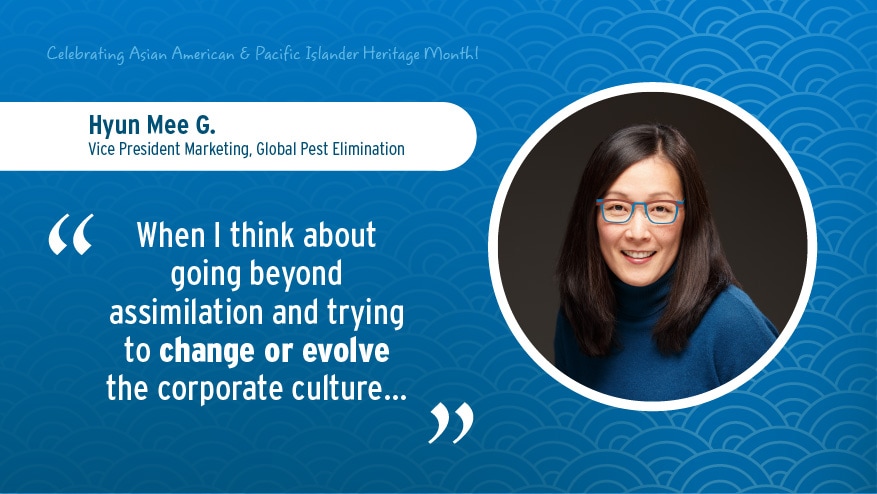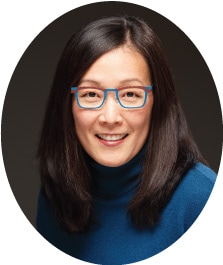How to Promote Diversification in the Workplace by Rejecting Assimilation
Hyun Mee Graves, vice president, marketing, Global Pest Elimination writes about how we can move beyond assimilation in the workplace

How do you define assimilation?
For me, this word transports me to a scene from science fiction where a human is told by a cyborg or alien, “You will be assimilated.” The human must be changed to fit into this new society and, ultimately, survive. It’s a dark concept. While this is futuristic in some ways, it’s also something that I and many others grapple with in today’s society.
Last month, I had the honor of joining a panel discussion featuring an amazing group of local leaders at the Twin Cities Asian Executive Leadership (TCAEL) Conference, a virtual event hosted by Target and sponsored by local Twin Cities’ corporations, including Ecolab. During the event I was asked to reflect on the word assimilation and its relation to stereotypes and to share my thoughts on how we can move beyond assimilation in the workplace.
This question forced me to stop, think and reflect on the meaning of assimilation. According to the Oxford dictionary, assimilation is the absorption and integration of people, ideas or culture into a wider society or the process of becoming similar to something.
For me, it boils down to a simple question: how do I fit in? More importantly, how do I fit into an existing culture without becoming hidden, without being the center of attention, without making it hard for people to digest and without losing myself – including the value that I could add. It can be quite a needle to thread!
"To drive change, we must practice regularly inserting or bringing diverse perspectives to the discussion. This doesn’t mean multiple times a day, every day. It starts with actively thinking about it and then actively deciding whether to say something."
Hyun Mee Graves
Vice President, Marketing, Global Pest Elimination
In my endeavor to answer these questions, I realized I was exploring the concept of cultural contribution, the idea that you can enter an organization or team and understand the cultural norms but still bring your unique perspective and values.
Now, as we celebrate Asian American and Pacific Islander Heritage Month, I’m reflecting on my own experience as an Asian American woman entering an organization. I joined Ecolab a year and a half ago in the midst of the COVID-19 pandemic and during a time of increased racial and social unrest. Before even considering applying to work at Ecolab, I had read Ecolab’s messages and positions on these important issues. I also heard from friends and former colleagues about their own experiences at the company. Throughout the interview process and beyond, what was evident to me was the culture and the intention of the company to live up to its values. Notably, every introductory call started or ended with, “I want to make sure I’m pronouncing your name correctly,” or something to that effect. It’s a seemingly small gesture but its impact was amplified by the consistency of delivery and the sincerity of tone.
So how do we go beyond assimilation and try to change or evolve the corporate culture? Well, it takes effort and practice. It’s knowing when to speak up and to do more telling instead of waiting to be asked to share your thoughts and opinions. This doesn’t have to be demonstrated with grand or momentous gestures but can be done in small ways. Sometimes, I decide to spend more time in a 1:1 update just catching up and sharing more about my time outside of work, sprinkling in pieces of my culture. I find it opens the door to questions from my co-workers. Other times, I think about whether I should say something in a meeting or stay quiet. And I tell myself that being quiet is okay. The important thing is that I thought about it and didn’t give into the feelings of “should have” or “was supposed to.”
Overall, I believe this is a game of inches that is going to take time. To drive change, we must practice regularly inserting or bringing diverse perspectives to the discussion. This doesn’t mean multiple times a day, every day. It starts with actively thinking about it and then actively deciding whether to say something.
It's not going to be instantaneous. And, if I’m being honest, I wouldn't feel comfortable if we rushed into it. Diversifying our culture requires the opportunity for others to discover their own way of sharing themselves and giving people the opportunity to ask questions, without fear of judgment. And I’m grateful that our values as a company support a culture where we’re not assimilated but embraced for our differences.


